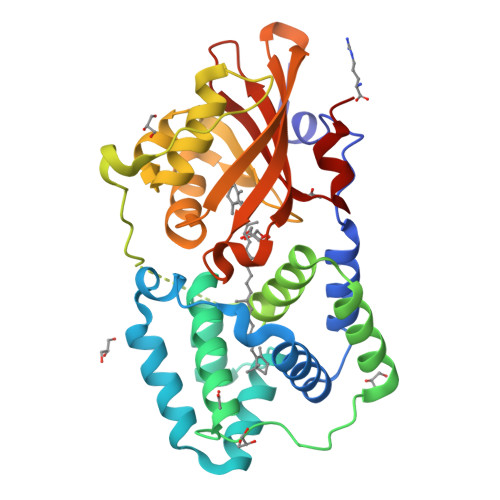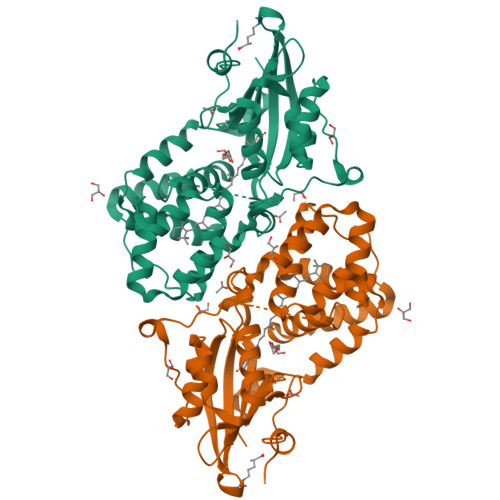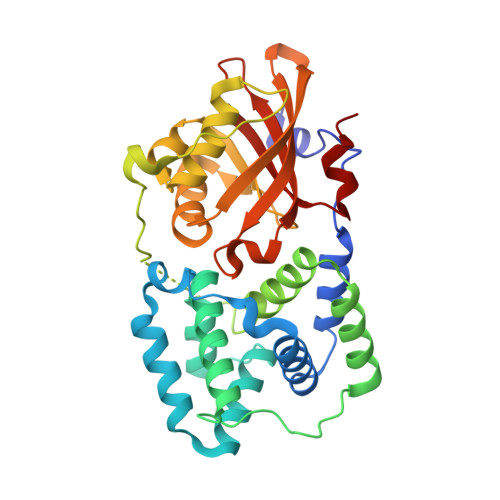Structure-function-dynamics relationships in the peculiar Planktothrix PCC7805 OCP1: Impact of his-tagging and carotenoid type.
Wilson, A., Andreeva, E.A., Nizinski, S.J., Talbot, L., Hartmann, E., Schlichting, I., Burdzinski, G., Sliwa, M., Kirilovsky, D., Colletier, J.P.(2022) Biochim Biophys Acta Bioenerg 1863: 148584-148584
- PubMed: 35752265
- DOI: https://doi.org/10.1016/j.bbabio.2022.148584
- Primary Citation of Related Structures:
7QCZ, 7QD0, 7QD1, 7QD2 - PubMed Abstract:
The orange carotenoid protein (OCP) is a photoactive protein involved in cyanobacterial photoprotection. Here, we report on the functional, spectral and structural characteristics of the peculiar Planktothrix PCC7805 OCP (Plankto-OCP). We show that this OCP variant is characterized by higher photoactivation and recovery rates, and a stronger energy-quenching activity, compared to other OCP studied thus far. We characterize the effect of the functionalizing carotenoid and of his-tagging on these reactions, and identify the time scales on which these modifications affect photoactivation. The presence of a his-tag at the C-terminus has a large influence on photoactivation, thermal recovery and PBS-fluorescence quenching, and likewise for the nature of the carotenoid that additionally affects the yield and characteristics of excited states and the ns-s dynamics of photoactivated OCP. By solving the structures of Plankto-OCP in the ECN- and CAN-functionalized states, each in two closely-related crystal forms, we further unveil the molecular breathing motions that animate Plankto-OCP at the monomer and dimer levels. We finally discuss the structural changes that could explain the peculiar properties of Plankto-OCP.
Organizational Affiliation:
Université Paris-Saclay, CEA, CNRS, Institute for Integrative Biology of the Cell (I2BC), 91198 Gif-sur-Yvette, France.






















